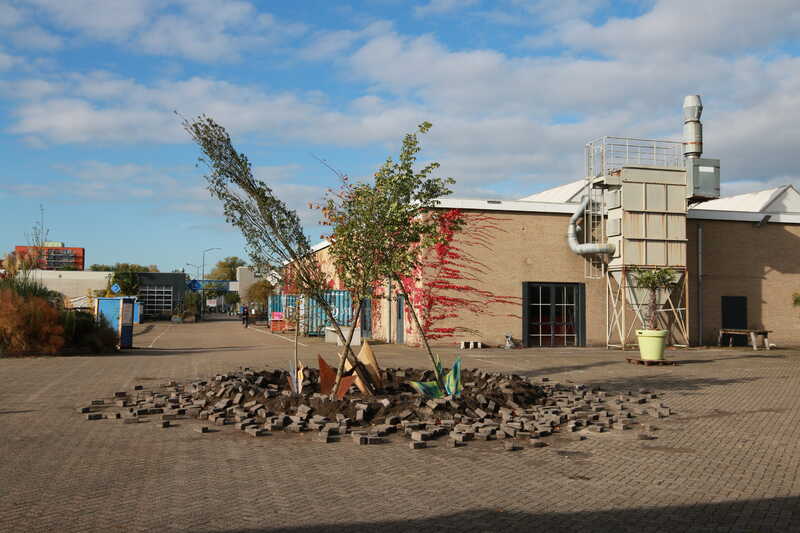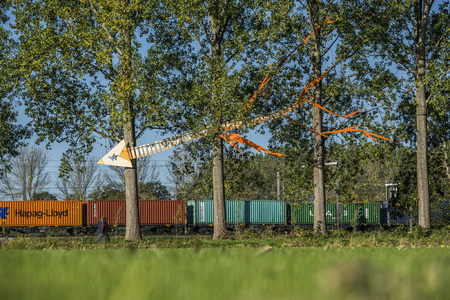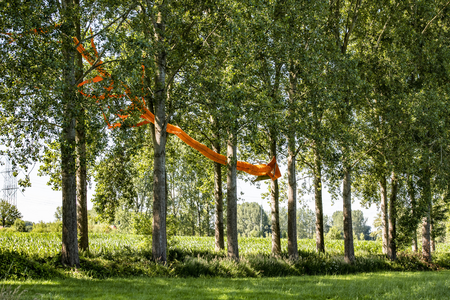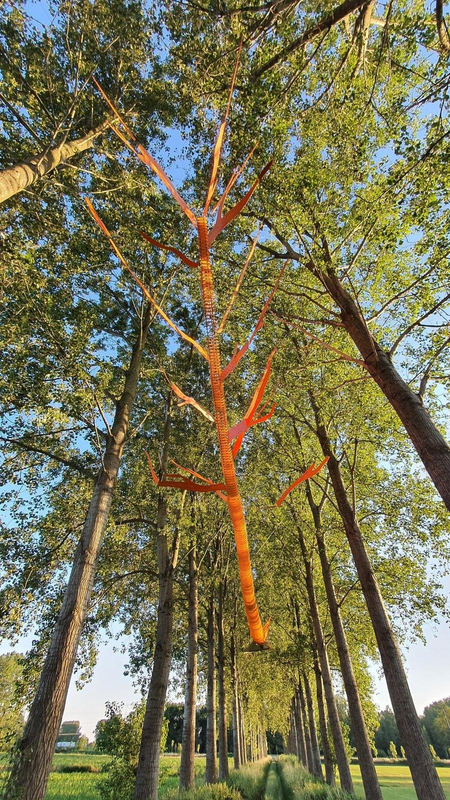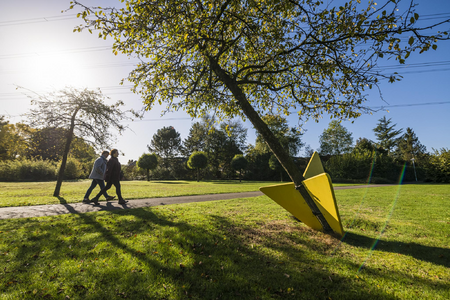Boompijl (treearrow) is invasive art project.
Land art
Boompijl is an ode to skewed growth and the fighting spirit of nature
In 2016, a major storm rages across Brabant: thick tree trunks are broken like matchsticks. I cycle past it and in my fantasy I see trees as fired mortars, as if it were a war under the trees with trunks that fire themselves like arrows. Since then I look at trees differently and the arrow as a symbol settles in my head. A few years later, when the museums close due to corona, Boompijl emerged as a guerrilla art project. Together with a team of artists, archers and tree specialists, I start attaching immense arrowheads to sloping trees. Thus turning he seemingly static tree into a dynamic object that claims its place.
Invasive
Boompijl is an invasive art project: It grows in a different place than where it originated. Just like invasive exotic species in nature. These often receive negative attention because they pose a threat to biodiversity. Boompijl wants to invade the landscape in a positive and creative way and plant a seed for an alternative view on the environment.
Art and nature during lockdown
In 2020 we launch a pilot in Eindhoven. A great way to introduce people to art during the lockdown. The arrowheads are used as canvas by author Leonieke Baerwaldt, visual artist Stijn Bles, graffiti artist Stijn van Leest, artist / rapper BRAZ (Bryan van Belzen). Together with students from SintLucas, we develop the online platform www.boompijl.nl where people can point out sloping trees in their neighborhood that we can transform into a Boompijl. We are also getting more and more ideas and requests about planting sloping trees or even forests. Tree arrow is starting to grow. Literally.
Research on skewed growth
Because we want to learn more about how trees grow skewed, we start a test field in March 2021 together with organic tree nurser Arnold Schout. In the coming years we will be conducting research here into growing strong and healthy sloping trees. And we are also curious about the question: what can we learn from trees? Because skewed growth stands for so much more: survival mechanisms, adaptability, deviation from the norm, origin and (bio) diversity. In conversations with foresters, philosophers, landscape architects and artists, we will reflect on what it means to be skewed in the Dutch landscape. What does your origin say about your future development and interaction with your environment? Who or what determines in which direction you grow? Your roots, the sun, gravity or a neighboring tree? Wht does it mean to be “indigenous” for a tree? How long does it have to root for that? As an invasive exotic, can you ever become indigenous?
Straight is crooked
We also noticed that many old (landscape) paintings depict sloping trees. Why is that? Is it true that we actually really like things being tilted? Tree wholesalers who deliver to the state must deliver the trees perfectly straight, otherwise they will be rejected…
We want more crooked growth, because straight is crooked!

Follow the proces at: www.boompijl.nl and #boompijl
